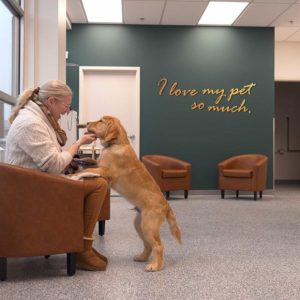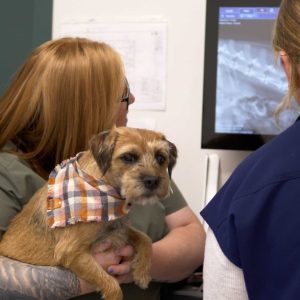In December 2016, a spay surgery was booked for a 5 month old Miniature Schnauzer named Ruby.
When we asked mom the routine admission questions, everything seemed normal. For example: Have
you noticed her going into heat yet? Mom reported “She might just be starting as there was a drop of
blood on the floor the other day.” Has she lost her baby teeth yet? “I think she’s just losing them now as her gums have a little bit of bleeding.” (Dogs normally get adult teeth in between 5-6 months).
As all good veterinarians do, we recommend pre-anesthetic blood work for all our patients to ensure
there is no underlying health concerns. And, like many puppy and kitten owners, Ruby’s mom declined
as Ruby seemed like a perfectly healthy, playful, and mischievous puppy with a great appetite.
We did notice a small amount of blood along her gums, which could be explained away by incoming
adult teeth. We sedated her and started our usual procedure, clipping her in preparation for surgery.
That’s when my nurse noticed some abnormal marks on her belly. Wondering if she was being bitten by fleas or mites we looked a little closer and found more on the inside of her ears. What we found on her belly and ears is called petechia – minor bleeding from broken blood vessels in the skin (ie. tiny bruises).This was a concern as it could be an indication of something sinister going on.
With a major surgery, like a spay, we want to make sure the patients blood can clot and won’t bleed
excessively. I opted to do a minor blood test to put my own mind at ease before starting surgery and
checked her red blood cell count (PCV) to see if we needed to do more digging. This came back very low at a level of 30, the normal level is 35, which indicated she was anemic and losing blood somewhere. This is when I called mom to tell her we needed to investigate further, explained what we found and asked for permission to do more blood work. Thank God we did!
Ruby’s full blood panel indicated that she had no platelets and was spontaneously bleeding (which is
why we saw the bruising on her belly and oozing from her gums). The blood spotting mom saw at home was actually her bleeding into her bladder. With a little more investigation Ruby was diagnosed with an immune disorder called Thrombocytopenia. This required months of medications and repeat blood tests to ensure she was getting better. She was eventually spayed a year after we initially planned, at the time of the spay we realized that wasn’t the only way that Ruby was unique. We uncovered an anomaly called uterus unicornous, meaning she only had 1 uterine horn compared to the two that most animals have!
In Ruby’s case, doing blood work was actually a lifesaving test. Had we gone ahead with surgery she
would have continued to bleed, not being able to clot on her own, and would have been in a dire
situation. Ruby is now one and a half years old and doing great!
This isn’t the only situation where pre-anesthetic blood work has been a saving grace, but definitely one of the more interesting (and scary) cases! Therefore we recommend pre-surgical blood work for
everyone, no matter how healthy they appear to be on the outside!







